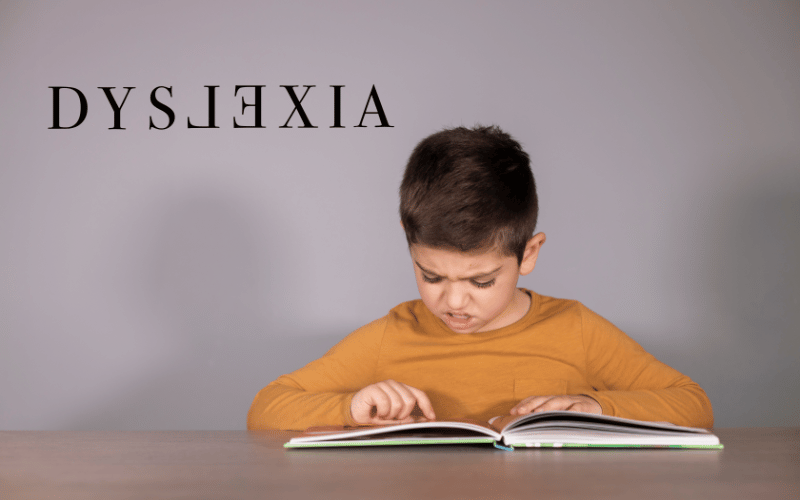Dyslexia in children: Recognizing the signs and supporting success is crucial for parents and educators alike. This learning disability, which affects a person’s ability to read, write, and spell, can be challenging for kids to overcome. However, with the right tools and support, children with dyslexia can achieve great success in their academic and personal lives.
In this article, we’ll explore the signs of dyslexia in children, delve into the various strategies and resources available, and answer some frequently asked questions. By the end of this article, you’ll have a better understanding of dyslexia and be equipped to provide the support that children with this condition need.

Recognizing the Signs of Dyslexia in Children
Early Signs: A Parent’s Perspective
Dyslexia can manifest in various ways, and it’s essential to recognize the signs early on. Here are some common indicators that parents should look out for in young children:
- Delayed speech development
- Difficulty pronouncing words
- Problems with rhyming words
- Trouble learning the alphabet, numbers, or colors
- Struggling to follow simple instructions
Later Signs: From School to Daily Life
As children grow older and enter school, dyslexia may become more evident in their academic performance and daily life. Keep an eye out for these signs:
- Reading at a slower pace than peers
- Difficulty recognizing or sounding out words
- Poor spelling and handwriting
- Struggling with reading comprehension
- Avoidance of reading or writing tasks
- Difficulty following multi-step directions
Supporting Success: Strategies and Resources for Children with Dyslexia
At Home: A Parent’s Role in Fostering a Supportive Environment
Parents play a critical role in supporting their child’s success. Here’s how you can create a nurturing environment for your child with dyslexia:
- Be patient and understanding: Children with dyslexia need extra time and support to complete tasks. Offer encouragement and celebrate their successes.
- Create a structured routine: Consistency is key for children with dyslexia. Establish a daily schedule for homework, chores, and leisure activities.
- Use multisensory techniques: Incorporate visual, auditory, and tactile methods to reinforce learning.
- Encourage reading: Foster a love for reading by providing a variety of books and reading materials that cater to your child’s interests.
In the Classroom: The Teacher’s Role in Supporting Success
Educators are crucial in helping children with dyslexia reach their full potential. Here are some strategies for supporting success in the classroom:
- Provide accommodations: Offer extra time on tests, preferential seating, or assistive technology to help level the playing field.
- Use multisensory teaching techniques: Incorporate a variety of learning modalities to engage students and reinforce concepts.
- Encourage collaboration: Pair students with dyslexia with peers who can provide support and encouragement.
- Foster a growth mindset: Help students understand that their abilities can improve with effort and persistence.
Resources for Children with Dyslexia
There are numerous resources available to support children with dyslexia, including:
- International Dyslexia Association (IDA): Offers information, resources, and support for individuals with dyslexia and their families.
- Understood.org: Provides expert advice and resources for parents and educators to support children with learning and attention issues.
- Bookshare: An accessible online library offering thousands of books in various formats, such as audio and large print, for individuals with reading disabilities.
- Dyslexia Training Institute (DTI): Offers online courses and resources for parents, educators, and individuals with dyslexia.
- Learning Ally: A nonprofit organization that provides audiobooks, support, and resources for individuals with dyslexia and other learning disabilities.
Frequently Asked Questions
What causes dyslexia in children?
The exact cause of dyslexia is not yet fully understood. However, research suggests that it is likely due to genetic factors and differences in the way the brain processes language.
Can dyslexia be cured?
Dyslexia is a lifelong condition, but with appropriate support and interventions, children with dyslexia can learn to read, write, and succeed academically.
At what age can dyslexia be diagnosed?
While there is no specific age for diagnosing dyslexia, early identification is crucial. Children can be assessed for dyslexia as early as preschool, but it is more commonly identified during the early years of elementary school.
How can I help my child with dyslexia at home?
You can support your child with dyslexia at home by creating a structured routine, using multisensory techniques, fostering a love for reading, and being patient and understanding. Encouraging open communication and celebrating their successes will also go a long way in boosting their self-confidence.
Conclusion
By understanding the early and later signs of dyslexia, creating supportive environments at home and in the classroom, and utilizing available resources, we can help children with dyslexia overcome challenges and achieve success in their academic and personal lives.
Remember that patience, understanding, and a strong support network are the foundations for helping children with dyslexia thrive. With the right tools and resources, these children can overcome the obstacles they face and reach their full potential.